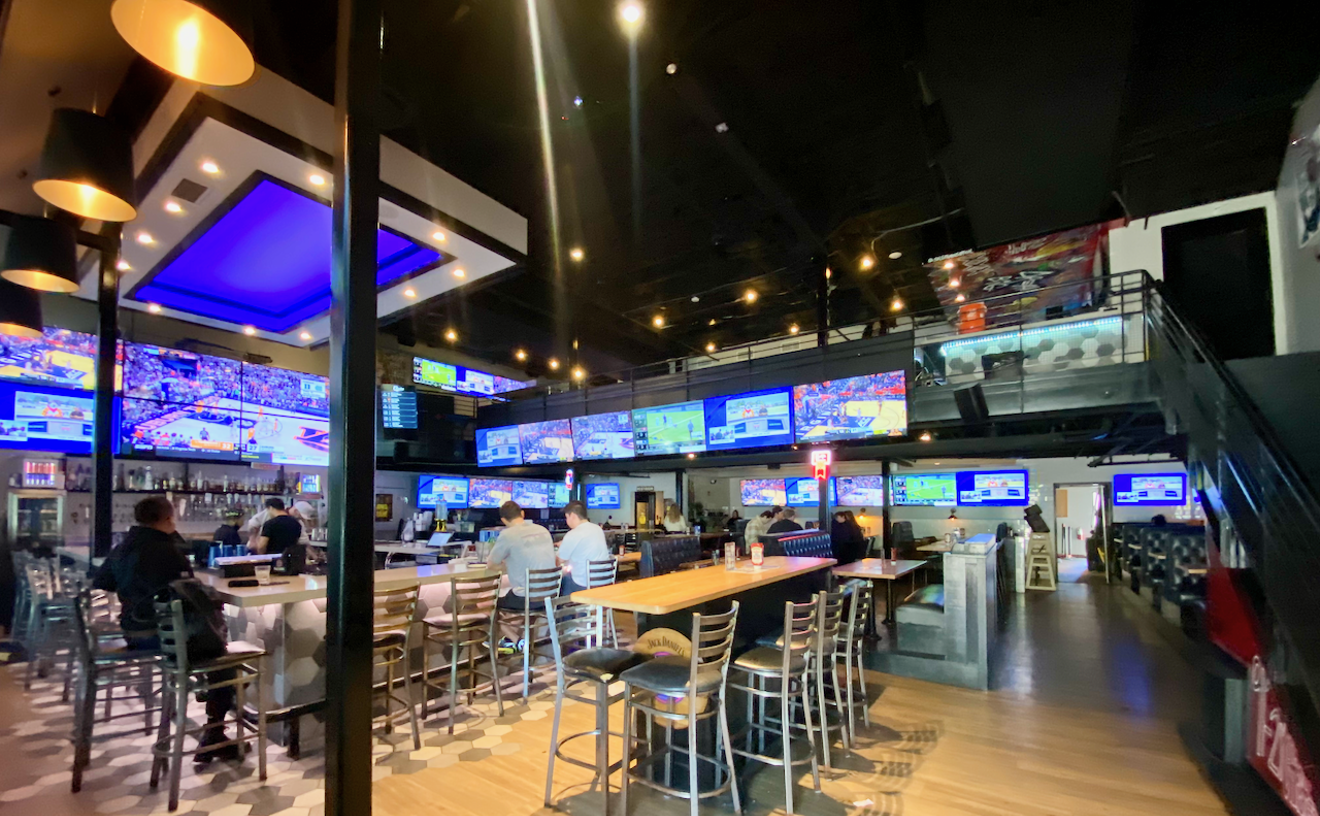This name should not be taken lightly. Royal Chopstix actually has historical relevance rippling through it. Invented some 3,000 years ago in China, chopsticks are mostly deployed in the four "chopstick countries": China, Japan, Vietnam and Korea, though you can throw Thailand in there too as a fifth. And though chopsticks were traditionally made of wood (the Chinese government recently imposed a 5 percent tax on disposable wooden chopsticks to protect the country's vanishing forests) with variations in bamboo, bone, ivory and, nowadays, plastic, there was a time when silver was used in the Chinese Imperial Palace. The preciousness of the metal wasn't the reason. Poison was. Silver could ferret out assassination attempts, or so the thinking went, because the metal would blacken if poison were present in the emperor's meals.
At the Royal Chopstix Coit Road strip-mall outpost in Plano, the chopsticks are composed of disposable wood, and Plano has yet to tax wooden chopsticks to protect its vanishing forests, so you can use them fearlessly. Forks are available too if you have yet to acquire the dexterity to tie spicy beef tripe into a festive bow with disposable chopsticks.
Relax. Royal Chopstix doesn't offer delicacies such as beef tripe or marinated sow's ear. What it does offer is a mainstream slate of Vietnamese, Chinese, Thai and Singaporean signature dishes in fast-food guise. On a wall near a rack holding various free publications there is a photograph of spring rolls—thin, lithe and elegant things with a little dish of indecipherable sauce for dipping. But on the pink plate—a real one, not some plastic or paper surface—the rolls are huge, bulging with sharp dimples and knobby bumps. The rice paper is thick, chewy and sticky, not the elegant semi-transparent culinary gauze you find in finer Vietnamese places. This is because these rolls are stuffed with coarsely chopped head lettuce, turning the rolls into rough burrito equivalents. Plus, some of the lettuce is browning. A few bean sprout strands appear through the leaves here and there, but some of these are browning too. Shrimp are fine, if you can find them. The peanut sauce, in a matching pink china bowl, is mostly good, plus it has chopped peanuts on top for added authenticity.
What's odd is that the same shrimp that appear in those spring rolls are also available in the pad Thai, or at least they appear to be the same. Except in the pad Thai they're shriveled like swimmer's thumbs, and they taste like wild catfish—that is, river mud. The rest of it? It's a nest of flat noodles packed into a large soup bowl. Tangled amongst the ribbons are onion shards, shriveled scallion strips, carrot slivers, sprouts (none browning this time) and bits of egg. The sauce is barely existent, save for the stickiness it imparts to the noodles. It exerts nothing: no sting, no tang, no sweet lick on the finish.
Royal Chopstix is a counter service concern launched by Sonny Huynh, who also owns about six Pho Que Huong Vietnamese restaurants scattered in and around Dallas. You can see the chefs work woks and pans through a large portal from which food is dispensed before it's bagged in plastic sacks for the sizable "to go" trade, which seems to be more exuberant than dining room traffic, where diners sit silently at green faux marble tables. Black chairs surround these tables, and black stools of roughly the same makeup are neatly assembled at a raised counter. Porcelain Buddhas and pheasants are posted on shelves that separate the dining room from the service counter.
"You know, before I came here, I almost stopped eating Chinese food," a man says to the woman behind the counter after finishing his meal. "But your food is so good." She smiles. She nods. Simple this place is. Floors are swept. Tables are cleared. People with brooms and wiping cloths seem to come out from under the shoe molding at regular intervals, just like they do in Disney World. Walls around the counter are covered in white ceramic tile with red accents—a wink at the American diner. On the walls hang paintings of Chinese junks forging through rivers and bays. "Royal Chopstix" is lettered in orange neon on a curved soffit above the counter.
There is no alcohol served at Royal Chopstix. Fluids flow from a carbonated soft drink fountain and a tank filled with iced tea.
But three different soups are offered, and they're nothing you haven't seen a million times in a million places in a million different guises, some of them sublime while others can be classed as blatant health code violations. Royal Chopstix renditions fall dead-center between these two extremes. There's won ton (you can scoop some of your own fried kind at the counter, not far from a huge glass urn of plastic-wrapped fortune cookies), hot sour and egg drop. The latter two reek of competence, thick and smooth with none of the coagulation and surface skin that often afflicts soups prepared in large quantities and left potted for quick distribution. Hot sour soup is crowded with mushrooms and tofu and scallions and strips of pork. Spice heat is ample, tucked throughout the unctuous slurry. It cracks at the back of the throat on the finish. What's missing is the bite, the "sour" in the hot sour.
Egg drop soup isn't generally considered a font of culinary excitement. It isn't here either. It's just smooth and hot with visible strips and coils of egg that are neither too sparse nor too numerous. The soup feels good going down, coating the throat with its soothing heat.
What's stunning about some of Royal Chopstix's fare is how visually vibrant it can be. When not confined to cartons or clamshells, it's assembled in a variety of plates, dishes and bowls.
Singapore chicken arrives in a small silver wok. The dish itself is a fluffy band of bright green broccoli florets circling an amber blossom of dark chicken chunks in a sauce made from a blend of black pepper and curry, all nested on a bed of fried rice. Probe into the dish, not even deeply, and the visual appeal unravels. The florets are cold, some of them with faded and yellowing undersides. And though the sauce is engagingly piquant, the chunked chicken is infested with gristle and sharp bits of bone.
Crispy chicken wings—a half-dozen of them—are piping hot and only slightly greasy. The moist, tender meat tumbles from the bone when forked or fingered.
Royal Chopstix is straightforward Asian fast food where exotica creeps in only in minimal amounts, if at all. Neither quality nor imaginative preparation is present in sufficient amounts to drop jaws or widen eyeballs, but you won't be turned off or bored either, especially at these prices. Most important, it won't blacken silver chopsticks, which is a good thing, even in Plano.
6205 Coit Road #364, Plano, 972-769-9662. Open 11 a.m.-10 p.m. daily. $










